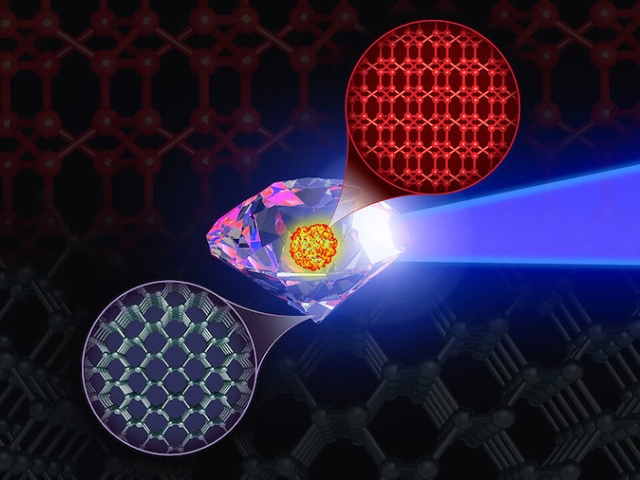[imagesource:youtube]
Researchers have been trying to figure out how to create superdiamonds, scientifically known as eight-atom body-centred cubic (BC8) crystals, which are harder than any known material.
But since they likely only exist in the cores of giant exoplanets, this has proven beyond challenging. That is, until the collaboration with the world’s fastest supercomputer.
As soon as Frontier supercomputer was put to work on this otherworldly gem, it unravelled the secret of their formation, a finding that could lead to their production on Earth.
Diamonds, the epitome of breathtaking beauty, don’t just dazzle in exquisite jewellery; they play an indispensable role in cutting-edge technology worldwide. As the hardest substance known to humanity, thus far, their extraordinary composition powers the drilling of deep geothermal wells and serves as critical semiconductors in advanced nuclear batteries, showcasing their unparalleled versatility and significance.
So imagine what possibilities might open up if we could create a substance that’s even stronger than the strongest material known to humanity.
Cue an interplanetary war.
Scientists have predicted that a material which has eight carbon atoms packed into it for every four of those found in a diamond probably exists under the extreme heat and pressure found in the cores of planets at least two times bigger than Earth, per New Atlas.
Creating this BC8 “superdiamond” might be possible in the lab, but the conditions that need to be replicated are challenging, to say the least.
A replicator would need to reach 10 million times the pressure of the Earth’s atmosphere and temperatures approaching that of the sun’s surface, so running multiple physical experiments to attempt the production of BC8 is a little impractical.
Shjoe, ja, to say the least.
Enter Frontier at the Department of Energy’s Oak Ridge Lab, which has the power to run millions of atomic modelling situations over millions of sets of conditions to determine exactly what it would take to form BC8.
Frontier helped the group of researchers – led by Ivan Oleynik, the study’s lead author and a professor of physics at the University of South Florida – crack the BC8 code, which feels almost mythical in the community.
“It’s the ultimate challenge of high-pressure physics,” said Oleynik. “It’s our version of the philosopher’s stone that medieval alchemists believed would turn lead into gold if only they could find it. The alchemists didn’t have Frontier.”
“We basically fingerprinted every atomic environment around each atom in a billion-atom system that could result during the system’s evolution at extreme pressures and temperatures,” Oleynik said. “Without Frontier, this would have been impossible.”
I guess the big guy isn’t called Frontier for no reason. Here’s a video to explain a little more about how BC8 superdiamond creation might work here on planet Earth.
[source:newatlas]





